Charmed: The Maryland Film Festival Brings the World of Cinema to Baltimore
Written by: Christopher Llewellyn Reed | May 14th, 2017

The Maryland Film Festival (MdFF), founded in 1999 by Festival Director Jed Dietz, just ran its 2017 iteration May 3-7, in Baltimore. With 11 blocks of short films – including the traditional opening-night program of five – plus 34 features, the festival brought its usual eclectic mix of documentary and fiction, international and national, and narrative-based and experimental selections to Charm City, with some crew or cast representative from most films on hand for the post-screening Q&A’s. This year, the festival debuted its new venue, a renovated historic theater in the heart of the city, which will now become a year-round hub of curated cinema events, including movie revivals and other, more indie, fare.

Not only is the festival a popular destination for Baltimore-area cinephiles, it is also a favorite of visiting filmmakers, as I discovered in my interviews with some of them. Ramona Diaz, director of the documentary Motherland and Baltimore resident, says, “It’s a great non-competitive film festival. It’s really well-programmed, but aside from that, they treat filmmakers well. And since it’s non-competitive, you can finally see films.” Alex Ross Perry, director of the indie feature Golden Exits, echoes this sentiment: “The only obligations are to see movies and hang out with filmmakers, which to me hearkens back to my idea, from 1996, of a what a film festival was, when I was in middle school and discovering independent cinema, which was, ‘This must be a place where all these filmmakers hang out and meet each other.'” Diaz and Perry, Sundance veterans, both (who each saw their MdFF films premiere at Sundance in January of this year), contrast that laid-back with that bigger festival, Diaz saying, “I love Sundance, but the bigger festivals do not engender that kind of collegial feeling.” No wonder so many filmmakers follow their films here, to the benefit of local audiences.
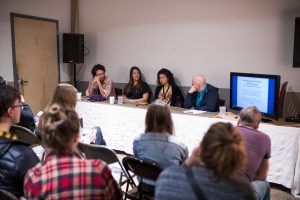
In addition to the many screenings, the festival runs a full slate of panels, as well. This year, starting Friday and continuing through Sunday, there were panels on the following topics: cinematography; spirituality in cinema; adapting shorts to features; documentary filmmaking; cinematic activism; women in film; Historically Black Colleges and Universities (an especially appropriate topic, given the presence of Stanley Nelson’s Tell Them We Are Rising in the MdFF lineup); and many more. It was my great pleasure to moderate the panel on cinematography, which included Directors of Photography (DPs) Ashley Connor (who shot Person to Person, playing at this year’s MdFF) and Sean Price Williams (who shot three films at this year’s MdFF: Golden Exits, Maineland and Thirst Street), and director/DP/producer Jessica Kingdon (whose wonderful short, Commodity City, was part of opening night). The space in which the panels took place was consistently packed, a clear indication that it is not only filmmakers who love coming to the festival. No doubt the goodwill they feel translates into a general bonhomie felt by all.
Between the films I had previously seen at SXSW, through remote coverage of Sundance, or through pre-fest press links, not to mention actual attendance at on-the-ground screenings at the MdFF, itself, I had watched, by the end of the five days, 21 of the 34 features, plus two of the shorts programs. This year, I liked more of the fiction films than usual, since I have frequently found that my documentary tastes align with those of the programmers’ far more than do my fiction ones. Whatever I think of individual movies however, I applaud the festival’s staff for its pick of a broad spectrum of genres and styles, making the Maryland Film Festival truly live up to its slogan, “Film for Everyone.” Here are my top 10 choices from this year’s lineup, in alphabetical order, divided into fiction and nonfiction categories.
DOCUMENTARY FILMS:
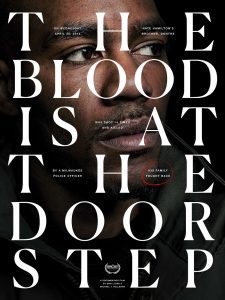
The Blood Is at the Doorstep (Erik Ljung): the paragraph, below, is taken from a longer review I wrote for Hammer to Nail.
Shootings of unarmed African-American men by police are, sadly, so frequent in the United States that they almost blend together in one big wave of civil-rights injustice. Almost. Every single human being wounded or killed is very much an individual, deserving of the respect and consideration due to all of us. Sometimes, however, it can be difficult to separate these individuals from the mounting pile of statistics. Fortunately, there are movies like The Blood Is at the Doorstep, the feature-documentary debut of director Erik Ljung, to remind us of the unique details of just one recent case, that of Dontre Hamilton, shot 14 times in Milwaukee on April 30, 2014. The specificity of his story – and that of his surviving family members – leads to profound truths about the rising tide of police violence against the disenfranchised that we must, as a nation, confront and reverse, lest we slide further away from our status as the land of the free.
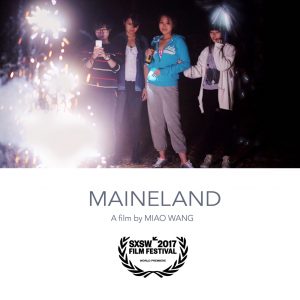
Maineland (Miao Wang): the paragraph, below, is an adaptation of a longer review I wrote for Hammer to Nail, and a reprint from my post-fest piece on SXSW.
In director Miao Wang’s new documentary – the second in a trilogy that began with Beijing Taxi, in 2010 – we follow a group of Chinese teenagers as they come to the United States to study in a private boarding school. These particular students elect to attend Fryeburg Academy, in Maine, which has long played host to foreign nationals (as have many of its peer institutions). To avoid overwhelming the audience with data, Wang chooses two main characters, a boy and a girl, Harry and Stella, each of whom has a very different trajectory over the course of the three years we spend with them. Harry is nerdy and somewhat awkward, while Stella is a social butterfly. We meet them first in China, as they ponder their choices of where to study, and then travel with them to Maine. And so, for three years, we watch them grow. Harry eventually settles in, leaning increasingly towards an international outlook, while Stella, initially so liberated by the American experience, looks homeward for her future, more comfortable with her Chinese peers than she thought she would be. It’s an interesting shift, just one of many surprises in store for the viewer. Over the course of a brisk 90 minutes, Wang weaves a fascinating tale – devoid of traditional documentary talking-head interviews – that profiles the intellectual and social development of two smart and determined individuals.
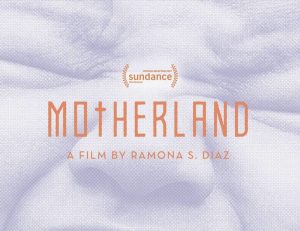
Motherland (Ramona Diaz): the paragraph, below, is an adaptation of a longer review I wrote for Hammer to Nail.
Courtesy of noted documentarian Ramona S. Diaz (Don’t Stop Believin’: Everyman’s Journey), we enter the “world’s busiest maternity ward” – Dr. Jose Fabella Memorial Hospital, in Manila, capital of the Philippines – as a fly-on-the-wall observer of the incredible variety of experiences that take place within. The women are poor (it’s a public hospital), mostly uneducated, and destined to a lifetime of copious procreation unless they take steps to limit or end their fertility (via IUDs or tubal ligation). Some take it as a matter of course, without complaint, that their job is to have children, while others dread what comes. It’s a largely Catholic nation, however, so birth control – or “family planning,” as the harried nursing staff refers to it – is not an easily discussed option. This is truly a remarkable work of documentary storytelling, raw, intimate and subsequently quite profound. After all, what greater drama can there be than that of birth, life and death? Motherland has it all.
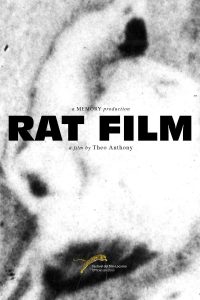
Rat Film (Theo Anthony): the paragraph, below, is an adaptation of a longer review I wrote for Hammer to Nail, and a reprint from my post-fest piece on SXSW.
An exhaustive, though never exhausting, history of Baltimore City’s relationship with its primary rodent, Rat Film offers a mesmerizing mix of straightforward documentary storytelling and experimental elements. This is Baltimore-based artist Theo Anthony’s debut feature, and he reveals himself a brashly confident filmmaker, never afraid to take creative chances in the pursuit of his narrative vision. I love the way he returns, time and again, to overhead maps of the city that reveal how the zoning decisions made in 1911 – based on racial segregation – have had an enduring impact on poverty, crime and density of rat habitats. Once we learn this, it’s difficult not to wonder at the bureaucratic cruelty of past urban planners whose resolutions have led us here. I also really like the voiceover by Maureen Jones, who serves, throughout, as our audio guide. She speaks in a near monotone, almost as if Anthony had directed her to sound as much like the mechanized voice of Siri as possible, thereby lending simultaneous familiarity and emotional detachment to the proceedings. At the same time, however, there’s a hint of dry wit beneath the surface, as if she and Anthony realize the potential absurdity of this approach. Ultimately, since the subject matter is, in fact, rather grim, this technique, and its attendant dramatic irony, serves the story well. Rat Film is a powerful amalgam of information and art, and I look forward to seeing more work from this filmmaker in the future.
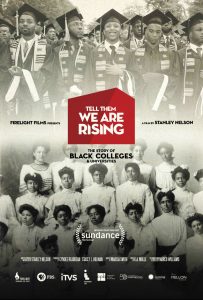
Tell Them We Are Rising: The Story of Black Colleges and Universities (Stanley Nelson): the paragraph, below, is taken from a longer review I wrote for Hammer to Nail.
From documentary director Stanley Nelson (The Black Panthers: Vanguard of the Revolution) comes a new film about the African-American experience that explores the founding and evolution of our nation’s historically black colleges and universities (HBCUs). From the 19th century to the present, these schools have afforded traditionally disenfranchised black populations the opportunity to educate themselves and thereby form a bulwark against those who would continue to demean and debase them. Nelson’s movie offers a solid history lesson on early challenges and the obstacles and opportunities that followed, explaining why even today there is a need and a desire for institutions where African Americans can feel comfortable. One young woman, a current student at Spelman College, even announces towards the end, “I just want to be me.” Hear, hear!
NARRATIVE (FICTION) FILMS:
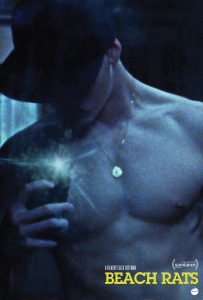
Beach Rats (Eliza Hittman)
A gritty film about a working-class kid in Brooklyn coming to terms with his identity as a gay male, Beach Rats features two strong lead performances from relative newcomers Harris Dickinson (as Frankie, the young man in question) and Madeline Weinstein (as Simone, a young woman who sets her sights on him). Director Eliza Hittman (It Felt Like Love) fashions her tale out of moments of violence, lust and heartbreak that collide in alternating ecstasy and agony. It’s a powerfully frenetic mix, all beautifully shot by Hélène Louvart (Dark Night) on Super 16mm film, which lends a palpable sweaty texture to the visuals that mirror Frankie’s own suppressed longings. “I don’t really know what I want,” he says, speaking to men through a gay chat site. That may be true, but what we want is more work from Hittman, who proves herself a champion storyteller here.
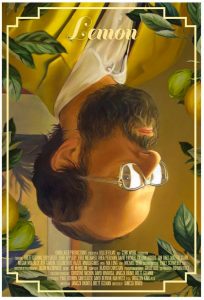
Lemon (Janicza Bravo)
What to say about a movie that opens with a man wetting himself on a sofa, his girlfriend asleep next to him? Actor/co-writer Brett Gelman (Flock of Dudes) is that man, Isaac, a hapless, pretentious neurotic who by all right should repel everyone he meets, yet somehow seems to have a nice house, a nice job (as a drama teacher) and women (more than one) who are at least semi-willing to give him half a chance. Director/co-writer Janicza Bravo, whose first feature this is (though she made copious shorts, including Gregory Go Boom), creates an oddly compelling dramedy in which we follow Isaac’s misadventures as his life (finally!) begins to fall apart. With Michael Cera (Person to Person, and also Gregory Go Boom), Judy Greer (Wilson) and Nia Long (The Single Moms Club), among other talented cast members, this quirky little twisted fable is simultaneously off-putting and deeply entrancing. It’s fun to be repulsed and engaged at the same time! At least I think so. And it has the added value of being a true original. I look forward to more from Bravo in the future.
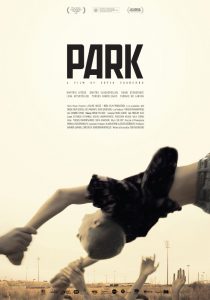
Park (Sofia Exarchou)
Like a cross between Larry Clark’s 1995 cinematic exposé of urban teen malaise, Kids, and William Golding’s 1954 novel Lord of the Flies, Greek writer/director Sofia Exarchou’s feature debut follows a group of neglected teens and pre-teens who hang out in the now-abandoned Olympic stadium in Athens (built for the 2004 Summer Games). With little to no adult supervision – the few older folks we see are largely preoccupied with their own needs – the kids run largely wild, though not entirely without order, as those who are strong of body and will can impose some kind of system. Nevertheless, they live in a world defined by decay, a perfect metaphor for the financial crisis that has decimated the Greek economy since 2010. As we watch certain situations devolve into potentially deadly chaos, we marvel at Exarchou’s fine way with her young, inexperienced cast, who deliver moving performances as sullen waifs, anger simmering below their violently lustful ways. Scary and profound, Park must be seen.

Princess Cyd (Stephen Cone): the paragraph, below, is an adaptation of a longer review I wrote for Hammer to Nail.
Princess Cyd, which had its world premiere at the MdFF, is about many things – including the sexual explorations of its 16-year-old titular character – but it’s the pitch-perfect creation of a circle of committed intellectuals that raises it beyond the level of your typical coming-of-age story. I appreciate the richness and verisimilitude of writer/director Stephen Cone’s world-building here, where words matter and all belief systems are welcome. With his talented cast working off the insightful script he has written for them, Cone (Henry Gamble’s Birthday Party) fashions a moving drama that hits all the right – though never predictable – beats on its journey towards an extremely satisfying conclusion. The superlative ensemble includes young Jessie Pinnick (Imogen) as Cyd, a young woman in search of an identity, sexual and otherwise, and Rebecca Spence (Grace Is Gone), as Miranda, her aunt, who takes her in for a few weeks when she’s having issues with her dad. Miranda is a celebrated writer; Cyd doesn’t read. Nevertheless, they find common ground. Life is full of choices; make your own, but always consider the alternative, and love those who make different choices. That’s a philosophy we should all defend.
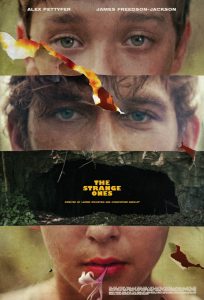
The Strange Ones (Christopher Radcliff/Lauren Wolkstein): the paragraph, below, is an adaptation of a longer review I wrote for Hammer to Nail, and a reprint (with a few tweaks) from my post-fest piece on SXSW.
Winner of a Special Jury Recognition for Best Breakthrough Performance at SXSW, The Strange Ones showcases lead actor James Freedson-Jackson in the role of a young kid on the road with his older brother, running from a murky, as-yet-unexplained tragedy. An adaptation of an earlier short film by the same duo, Christopher Radcliff and Lauren Wolkstein – two of the creative forces behind last year’s omnibus film Collective: Unconscious (he the editor, she one of the five directors) – this elliptical mystery offers a narrative that is sometimes too opaque for its own good, yet filled with genuine cinematic pleasures. Foremost among them is, indeed, the outstanding acting, not only from Freedson-Jackson (young Kilgrave on Netflix’s Jessica Jones) but also from Alex Pettyfer (Magic Mike) as the older brother. Together they huddle as a team against the world, until circumstances separate them and we learn the awful truth behind the central riddle of the plot. Radcliff and Wolkstein prove especially adept at playing with temporal and geographic shifts in the story, manipulating the medium of the moving image – the art of time and space – in a highly satisfying manner. If sometimes its artistic ambitions exceed the limitations of the story, The Strange Ones is still a powerful tale of loss and healing.

I saw many other fine films, among them Golden Exits (Alex Ross Perry), Person to Person (Dustin Guy Defa), Sylvio (Kentucker Audley/Albert Birney), and Werewolf (Ashley McKenzie), which had its U.S. premiere at the MdFF. Next year, I am sure I will see more great cinema. I encourage you, dear reader, to come to Baltimore and do the same.

